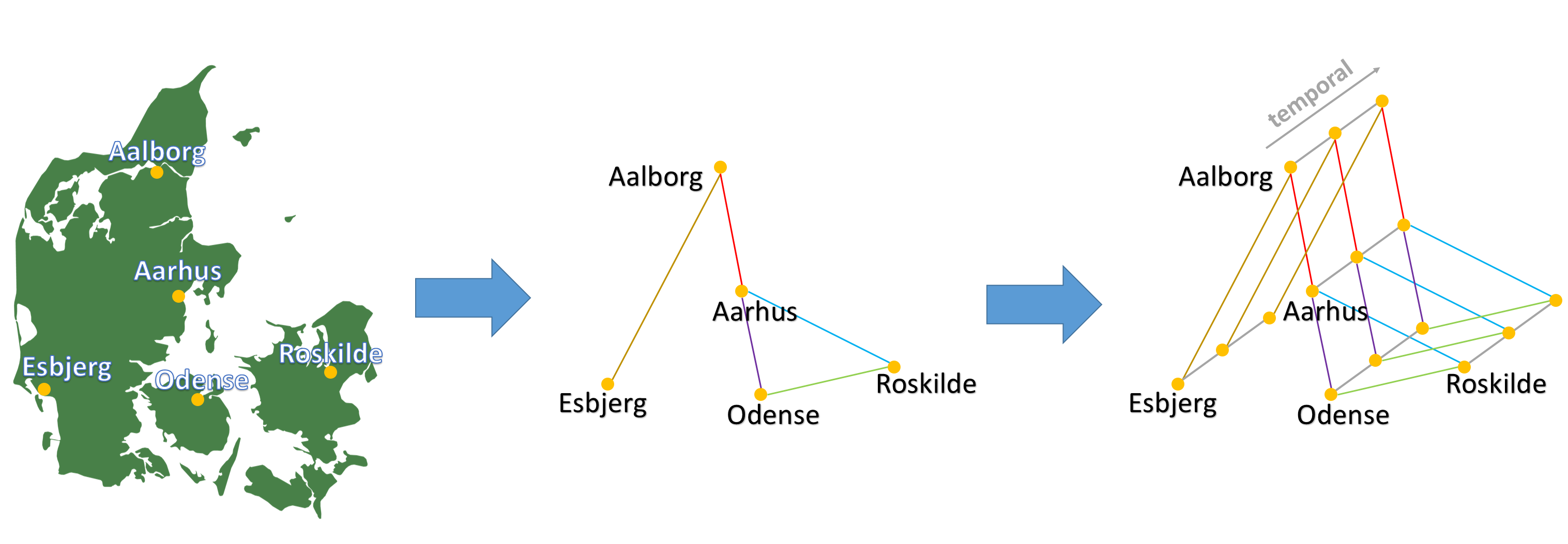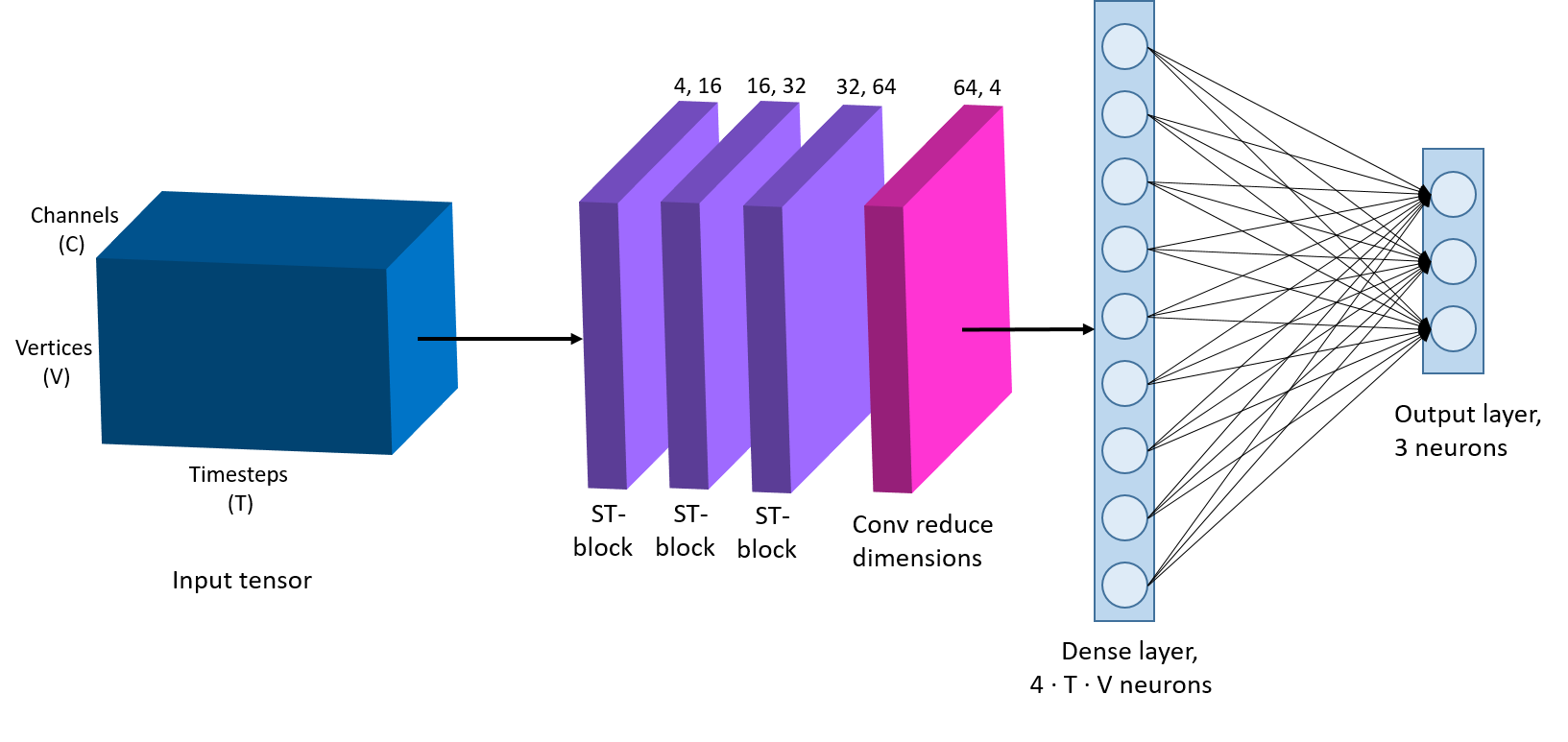Implementation code for the paper: "Deep Graph Convolutional Networks for Wind Speed Prediction" [LINK].
Clone the repository with git:
git clone https://github.com/tstanczyk95/WeatherGCNet.git
Install the required packages via command line or terminal:
pip install -r requirements.txt
Download the required datasets:
- Danish dataset, from here (input timestep (time lag) 30, derived from the dataset from here),
- Dutch dataset, from here (
Wind_data_NL).
Navigate to the desired combination, e.g. NL wind speed forecasting/WeatherGCNet with gamma.
Use train_model.py to train the corresponding model. E.g.:
python train_model.py --dataset_path data/dataset.pkl --epochs 50 --input_timesteps 30 --predict_timesteps 2
For more information about the usage, type:
python train_model.py --help
The usage is slightly different for Dutch and Danish dataset (use the --help option to see more).
The trained model with the lowest validation loss will be saved in a fromat including date-time information: best_model_nl_date_YYYYMMDD_hhmmss.pt.
Summary with test MAE and MSE of the saved model will be provided at the end of the run.
The trained models (input timestep 30) with weights are provided in trained_models, e.g. 2h_pred_model.pt. Use test_model.py to test a trained model. Ensure the correctness of the parameters with respect to the trained model. E.g.:
python test_model.py --dataset_path data/dataset.pkl --input_timesteps 30 --predict_timesteps 2 --model_path trained_models/2h_pred_model.pt
For more information about the usage, type:
python test_model.py --help
Analogously, summary with test MAE and MSE of the tested model will be provided at the end of the run.
@inproceedings{gcn_t,
title={Deep Graph Convolutional Networks for Wind Speed Prediction},
author={Tomasz Stanczyk and Siamak Mehrkanoon},
booktitle={European Symposium on Artificial Neural Networks, Computational Intelligence and Machine Learning (ESANN)},
pages={147--152},
year={2021}
}

